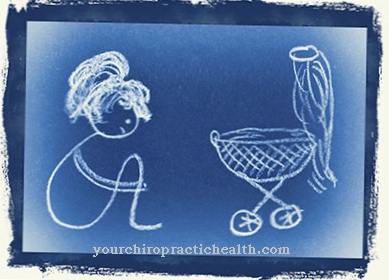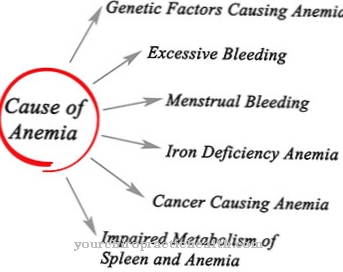In the Mastectomy a patient has a mammary gland removed on one or both sides. Most often this procedure takes place as part of cancer treatments. Depending on the amount of tissue removed and the incision, women may not be able to breastfeed after a mastectomy.
What is the mastectomy?

The removal of the mammary gland is called a mastectomy in medical terminology. A mastectomy can involve the removal of both the female and male mammary glands. Often the mastectomy is equated with the mastectomy. This is not entirely true because mastectomy removes all of the breast tissue, including the nipples.
This does not necessarily have to be the case with a mastectomy. The procedure is often followed by reconstructive measures, such as the provision of breast implants. Mostly, mastectomies are performed as part of cancer prevention or cancer therapy. Religious mastectomies have also historically occurred. In the Russian sect of Skopzen, for example, mastectomy was a widespread rite designed to reduce the sect's sexual desire.
Function, effect & goals
The indication for a mastectomy is given primarily in the case of malignant processes in the breast. This is especially true for cancers, the size of which is relatively large in relation to the overall size of the breast. In particular, pregnant women and those with diseases such as scleroderma have little choice but to remove the mammary gland and the surrounding tissue when it comes to breast cancer. If there is a genetic risk for breast cancer, mastectomies are sometimes used preventively.
Interventions in the context of sex reassignments are indicated less often. Sometimes the operations are even carried out as purely aesthetic interventions aimed at reducing the size of the breasts. In this case, the operation does not take place unilaterally, i.e. one-sided, but bilaterally. Depending on the goal of a mastectomy or how much tissue is affected by a malignant process, the operation can take on different dimensions. For example, partial mastectomies such as lumpectomy or quadrantectomy remove only a tiny part of the breast. In a lumpctomy, only the tumor itself and its adjacent tissue are removed and the breast is largely preserved. A differentiation from partial mastectomies of this type is total mastectomy, in which the entire mammary gland is removed.
With a subcutaneous total mastectomy, the areola and skin are preserved. With a simple total mastectomy, the affected skin area is also removed. The same goes for nearby fatty tissue and the fascia of the pectoral muscle. In the modified radical mastectomy, the lymph tissue of the armpit area is also removed. A radical mastectomy with additional removal of an entire muscle is hardly used today. The length of stay in the hospital is usually between three and ten days. In the case of mastectomies for cosmetic reasons, depending on the size of the breast and thus the amount of tissue to be removed, the procedure is usually divided into two procedures, with a period of six or even twelve months between them.
In all types of mastectomy, the patient is given antibiotic prophylaxis beforehand. In order to educate the patient, a detailed informative discussion usually takes place the day before the operation. If non-palpable changes in the breast are to be removed, the areas to be removed are marked with a dye or a fine wire. Usually, patients wear a compression bandage for the first 24 hours after surgery. In breast cancer patients, the findings are usually checked every quarter after the mastectomy.
Risks, side effects & dangers
In addition to the general risks of surgery and anesthesia, mastectomy is particularly associated with an increased risk of adhesions. Infections and disorders of wound healing can occur. The same applies to hematomas and paresthesias, such as persistent numbness or other sensory disorders in the surrounding skin area. Sometimes there is also an abnormal amount of wound fluid on the operated area.
Bleeding, water retention and seam insufficiencies are also possible. As things stand today, serious complications are rare. The mastectomy is a relatively safe standard procedure in current medicine. As a rule, mastectomies are associated with pain, but the doctor may treat this with painkillers. A mastectomy of the female breast can, but does not have to, impair the ability to breastfeed. The decisive factor in this regard is the incision, the amount of tissue removed and the involvement of nerves, milk ducts and blood vessels.
Women often feel that their femininity has been curtailed after a mastectomy. This feeling can make breastfeeding difficult even if it is anatomically possible after the mastectomy. For example, many women suffer from severe psychological problems after the operation. However, psychotherapy and breast reconstruction can sometimes completely subside these after-effects of the procedure. Mastectomy sometimes enables breast cancer patients to dispense with radiation therapy altogether, as can be recommended for health reasons. Nevertheless, the procedure is not an unquestionable guarantee of a cure from a malignant process. Relapses are always possible.

.jpg)




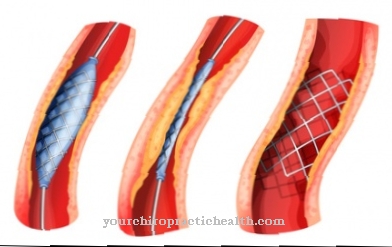



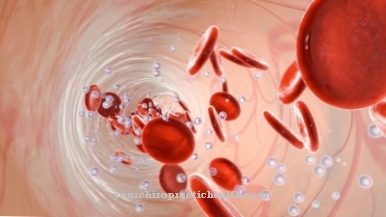


.jpg)

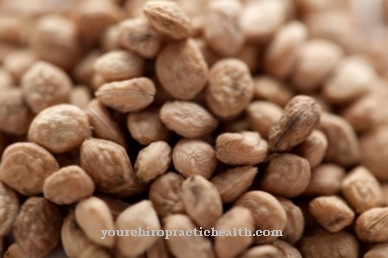





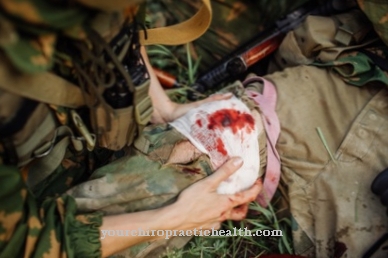
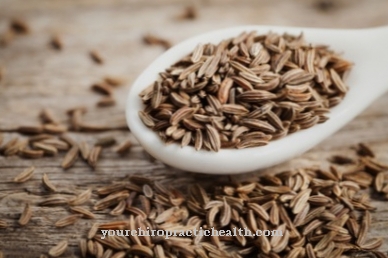


.jpg)
